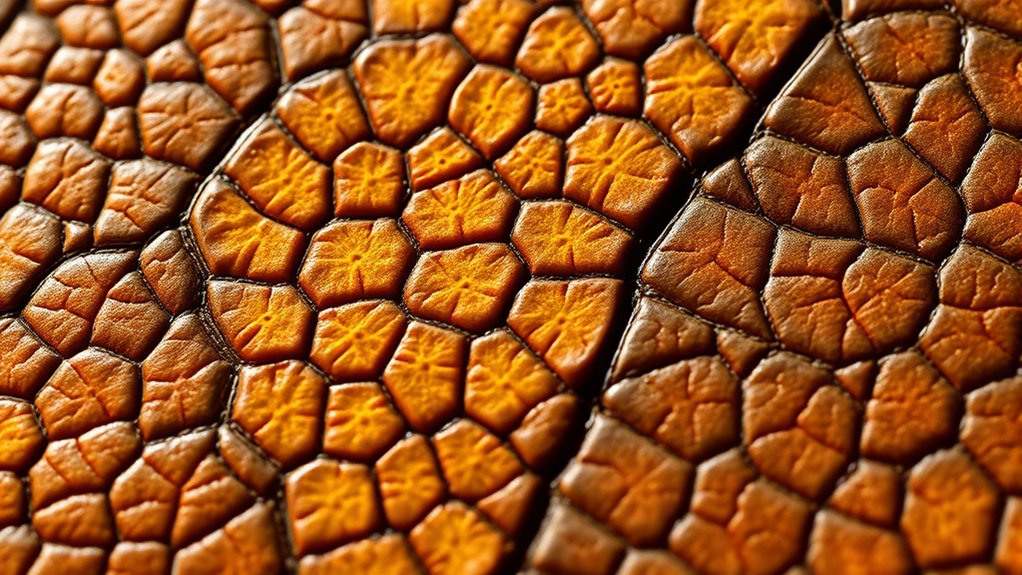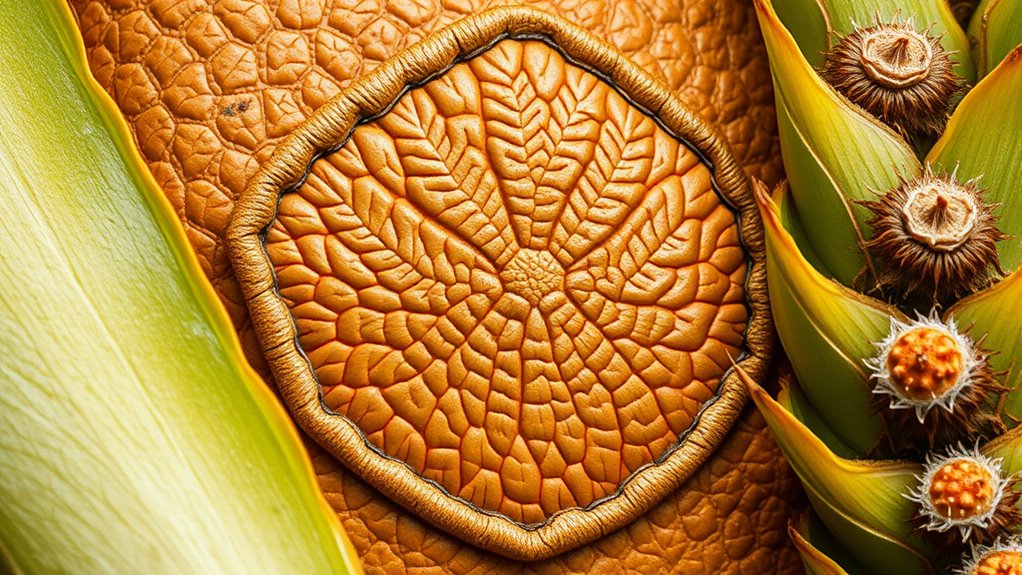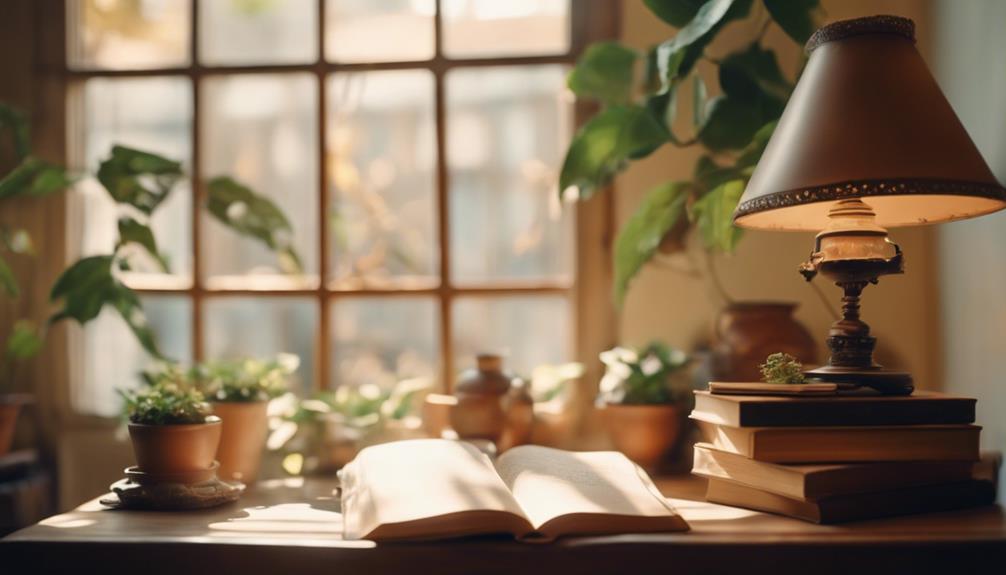Fungi and pineapples are revolutionizing fashion by creating sustainable, plant-based leathers that reduce environmental impact while offering stylish options. Fungi, made from mushroom root structures, are durable and customizable with minimal resources, supporting circular economies. Pineapple leaves transform agricultural waste into eco-friendly, breathable fabrics that benefit local communities. These innovative materials are opening new creative possibilities for designers and consumers alike—discover how these innovations are shaping a more sustainable future in fashion.
Key Takeaways
- Fungi-based leather, made from mushroom mycelium, offers a sustainable, durable, and customizable alternative to traditional leather.
- Pineapple leaf leather (Piñatex) transforms agricultural waste into eco-friendly, lightweight, and strong materials for fashion products.
- Both materials reduce environmental impact by requiring minimal water, land, and energy compared to animal leather.
- They support circular economy principles by utilizing waste and byproducts, promoting responsible sourcing.
- These innovations are reshaping fashion, enabling stylish, eco-conscious, and sustainable designs.

Plant-based leather is quickly gaining popularity as a sustainable alternative to traditional animal-derived leather. As someone interested in eco-conscious fashion, you’ll be pleased to know that this shift isn’t just about reducing animal harm — it’s also about embracing sustainable sourcing and innovative materials. Companies are now turning to natural, renewable resources to create products that look and feel like leather but have a much smaller environmental footprint. This movement is transforming the industry, giving you options that align with your values without sacrificing style or quality.
Plant-based leather offers stylish, sustainable alternatives that reduce environmental impact and support innovative, eco-friendly sourcing.
One of the most exciting developments involves using fungi to produce leather. Fungi-based materials are cultivated from mycelium, the root structure of mushrooms, which can be grown rapidly and with minimal resources. When you choose fungi leather, you’re supporting a process that requires less water, land, and energy compared to traditional leather production. This innovative material is durable, flexible, and can be customized in texture and color, making it an attractive choice for brands aiming to combine sustainability with high fashion. By opting for fungi-based leather, you’re encouraging a shift towards sustainable sourcing that minimizes environmental harm while still delivering a premium product. Additionally, fungi leather is often a byproduct of other processes, which further reduces waste and promotes circular economy principles.
Similarly, pineapple leaves are inspiring a new wave of plant-based leather alternatives. This material, often called Piñatex, utilizes the natural fibers of pineapple leaves that would otherwise be discarded as agricultural waste. Instead of wasting these resources, manufacturers turn them into a versatile, eco-friendly fabric that mimics leather. When you buy products made from pineapple fiber, you’re supporting a circular economy that values waste reduction and responsible sourcing. Piñatex is breathable, lightweight, and strong enough to be used in various accessories, from shoes to bags, giving you stylish, sustainable choices that aren’t just good for the planet but also for local farmers and communities.
Both fungi and pineapple-based leathers showcase how innovative materials are reshaping the fashion landscape. They prove that sustainability doesn’t have to come at the expense of quality or aesthetics. By choosing plant-based options, you’re actively participating in a movement that promotes environmentally responsible sourcing and supports new technologies that reduce reliance on animal agriculture. These materials also open up endless creative possibilities for designers, allowing for unique textures, finishes, and styles that appeal to modern consumers seeking eco-friendly alternatives. Ultimately, by embracing these innovative plant-based leathers, you’re making a conscious choice to wear fashion that’s kind to the planet, aligns with your values, and pushes the industry toward a more sustainable future.
Frequently Asked Questions
What Are the Environmental Impacts of Fungi and Pineapple-Based Leathers?
You’ll find that fungi and pineapple-based leathers offer significant environmental benefits. They’re biodegradable, meaning they break down naturally, reducing waste in landfills. These materials also consume fewer resources during production compared to traditional leather, lowering water and energy use. By choosing these sustainable options, you help reduce resource consumption and support eco-friendly fashion, making a positive impact on the environment while enjoying stylish, cruelty-free alternatives.
How Durable Is Plant-Based Leather Compared to Traditional Leather?
You might think plant-based leather can’t match traditional durability, but you’d be surprised! In a durability comparison, plant-based leathers like fungi and pineapple often hold up remarkably well, sometimes even surpassing conventional materials. Their material longevity continues to improve with innovation. While they may need gentle handling initially, many are now crafted to last just as long, making them a practical, eco-friendly alternative without sacrificing strength or style.
Are Plant-Based Leathers Suitable for All Fashion Products?
You might wonder if plant-based leathers suit all fashion products. While they excel in material versatility, offering eco-friendly options for accessories and apparel, there are style limitations for certain high-end or structured items. You’ll find they work well for casual and innovative designs, but for more formal or intricate pieces, traditional leather might still be preferable. Overall, plant-based leathers are expanding possibilities, though some product types may still face challenges.
What Is the Cost Difference Between Plant-Based and Animal Leather?
You might wonder about the cost comparison between plant-based and animal leather. Generally, market pricing shows plant-based options can be more affordable due to sustainable production processes and raw materials like fungi and pineapples. However, initial costs might be higher for some innovative plant-based leathers, but they tend to be more cost-effective over time. Overall, choosing plant-based leather can save you money while supporting eco-friendly fashion.
How Do Consumer Perceptions Influence the Adoption of Plant-Based Leather?
Imagine a world where your choices shape the future—your perceptions hold power. Consumer trust and aesthetic appeal are essential in embracing plant-based leather. When you see it as durable, stylish, and eco-friendly, you’re more likely to adopt it. Your positive perceptions can turn sustainability from a trend into a movement, inspiring brands to innovate. Your confidence fuels progress, making plant-based leather not just an option, but a preferred choice.
Conclusion
While some might worry that plant-based leather won’t match the durability of traditional materials, advancements in fungi and pineapple leather are proving otherwise. These innovative options not only reduce environmental impact but also offer stylish, long-lasting alternatives. By embracing these sustainable leathers, you help support eco-friendly fashion without sacrificing quality. So, don’t let concerns about longevity hold you back—these materials are evolving fast, making sustainable choices both practical and chic.









